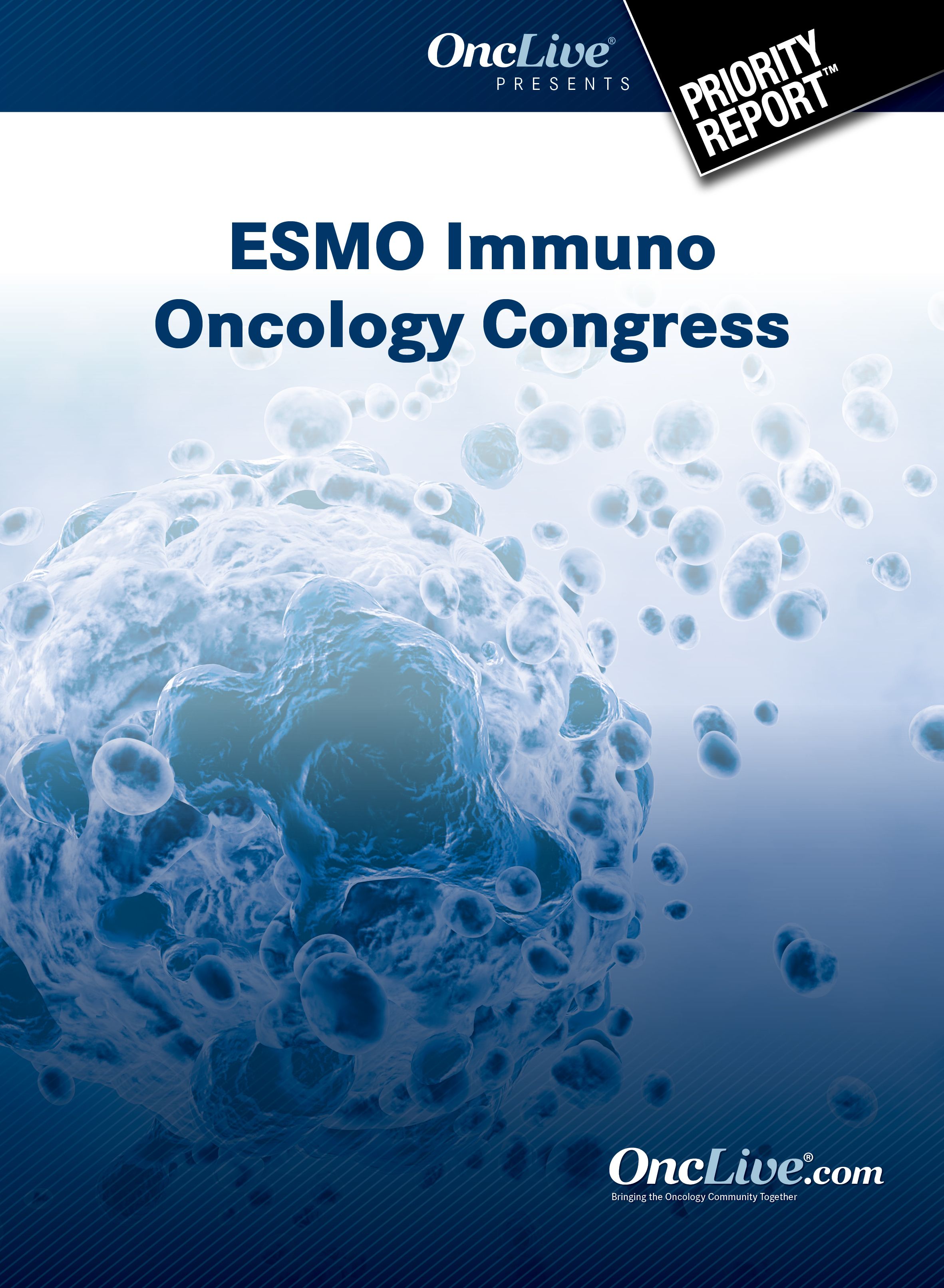Sitravatinib/Tislelizumab Combo Active in Advanced Ovarian Cancer
The novel combination of sitravatinib and tislelizumab showed encouraging antitumor activity and a manageable safety profile in patients with advanced ovarian cancer.
Bo Gao, MD, PhD, of the Oncology Department at Blacktown Cancer and Hematology Centre, Australia

Bo Gao, MD, PhD
The novel combination of sitravatinib and tislelizumab showed encouraging antitumor activity and a manageable safety profile in patients with advanced ovarian cancer, according to results of the phase Ib BGB-900-103 study (NCT03666143) reported at the 2019 ESMO Immuno-Oncology Congress.1
Of the 17 efficacy-evaluable patients in a cohort of 20 heavily pretreated patients with platinum-resistant advanced ovarian cancer, the confirmed objective response rate (ORR) was 23.5% (95% CI, 6.8-49.9). The best response was a partial response (PR), which was achieved by 7 patients; of these, PRs were confirmed in 4 patients and remained unconfirmed at the data cutoff in 3 patients.
“Combination treatment with sitravatinib and tislelizumab showed manageable safety and promising antitumor activity that was supported by 7 patients with PR and 8 patients with stable disease out of 17 patients with advanced ovarian cancer,” said lead study author Bo Gao, MD, PhD, of the Oncology Department at Blacktown Cancer and Haematology Centre, Australia. “Further investigation of this combination is warranted in patients with ovarian cancer,” added Gao.
Sitravatinib is an investigational, orally bioavailable spectrum selective RTK inhibitor with activity against TYRO3, Axl, Mer, VEGFR2, and KIT, whereas tislelizumab (BGB-A317) is an investigational, humanized IgG4 monoclonal antibody with high affinity binding to PD-1.
“Tislelizumab was engineered to minimize binding to the FcγR on macrophages to abrogate antibody dependent cellular phagocytosis,” Gao commented. “We reasoned that combining these agents could enhance the antitumor efficacy that was observed with either agent alone.”
The open-label, multicenter, study enrolled 180 patients with diverse solid tumors to 9 separate cohorts with 20 patients each; 3 cohorts contained patients with nonsquamous non—small cell lung cancer (NSCLC), 2 cohorts of squamous NSCLC, 1 cohort of patients with melanoma, 2 renal cell carcinoma cohorts, and 1 cohort enrolled patients with recurrent, platinum-resistant, epithelial ovarian cancer. Patients in the ovarian cancer cohort had disease recurrence within 1 to 6 months of the last platinum-based dose. To be eligible for enrollment, patients were required to be naïve to both anti–PD-1 and PD-L1 therapies.
In the ovarian cancer cohort, the median age was 66.0 (range, 26-80) years and more than half (55%) of patients were white. The ECOG performance status was 0 in 45% of patients and was 1 in the remaining 55%. The primary tumor location was the ovary in 75% of patients, fallopian tube in 15%, and the peritoneum in 10% of patients. Patients had received a median of 5 prior treatments (range, 2-12) and 13 (65%) patients had received ≥5 prior lines of treatment. Six (30%) patients had previously been treated with bevacizumab (Avastin).
All patients were treated with 120 mg of sitravatinib once daily in combination with 200 mg of tislelizumab every 3 weeks until disease progression, unacceptable toxicity, death, withdrawal of consent, or study termination. The primary objective was to assess the safety and tolerability of the combination therapy and the secondary endpoints included ORR, duration of response (DOR), disease control rate (DCR), and progression-free survival (PFS). Investigators also planned a retrospective analysis of PD-L1 expression.
The data cutoff date was July 17, 2019. The DCR was 88.2% (95% CI, 63.6-98.5) and the median DOR was not reached (NR; range, 12.29—NR). Progressive disease per RECIST v1.1 criteria was observed in 2 patients.
The median PFS was 18.0 weeks (range, 12.29—NR). The 3- and 6-month PFS rates were 88.2% (95% CI, 60.6-96.9) and 35.3% (95% CI, 9.0-63.8), respectively. All 20 patients in the cohort were included in the safety analysis, and all patients experienced ≥1 treatment-emergent adverse event (TEAE). Of these, most TEAEs were grades 1/2; the most commonly reported were diarrhea and nausea (45% each); 30% of patients each experienced abdominal pain, fatigue, or decreased appetite.
Grade ≥3 treatment-related adverse events included hypertension (25%), fatigue (10%), increased transaminases (10%), diarrhea (5%), and upper abdominal pain (5%).
Grade 1/2 immune-related TEAEs of hypothyroidism, diarrhea, and rash occurred in 20%, 15%, and 10% of patients, respectively; there were no grade ≥3 immune-related TEAEs that were treatment-related.
“Most of the grade ≥3 TEAEs were sitravatinib related; however, none of these were grade 4 or 5,” Gao said. “Combination treatment with sitravatinib and tislelizumab had a generally manageable safety profile.”
TEAEs that led to sitravatinib discontinuation occurred in 30% of patients and occurred in 15% of patients who discontinued tislelizumab due to a TEAE. Sitravatinib dose modification was required in 75% of patients, which consisted of dose reductions (25%) and dose interruptions (75%). With tislelizumab, dose modification was seen in 45% of patients; of these, 40% of patients had a dose delay and 5% had dose interruption.
TEAEs leading to death that were not considered related to treatment occurred in 2 (10%) patients, 1 of each were due to abdominal pain and respiratory failure.
Gao B, Goh J, Markman B et al. Safety and antitumor activity of sitravatinib in combination with tislelizumab in patients with advanced solid tumors: ovarian cancer cohort data. Annal Oncol. 2019;30(suppl_11):xi33-xi47. doi: 10.1093/annonc/mdz451.




